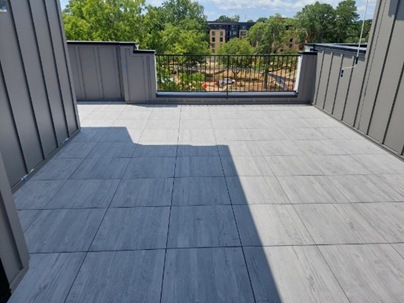A local resident called us last week to talk about replacing the shower bottom in his 1 ½ year-old home. He said he has a pan leak in his second-story shower, and, since his one-year warranty “is up” he is sure his original contractor won’t help him.
We encouraged him to go back to his builder and strongly urge the contractor, his plumber, and his tile person to work together to resolve the issue. It may take some time and persuasion, but properly prepared tile showers are not supposed to leak after 1, 3, 5 or even 10 years!
We’ve been doing business in the Triangle for a long time, and it used to be very rare to get a call about a shower pan leak. In the mid-90s we did start getting a lot of calls about tile falling off shower walls because one production builder had come to town and was adhering tile onto drywall in showers (it will start falling off in less than 2 years). However, even then, shower bottom leaks were uncommon.
Now though, we get at least two calls a week from homeowners who have a water spot on the downstairs ceiling right below their master shower, or who have discovered rotten wood or water damage in their crawl space under a shower that’s been leaking for a while. Most of the time, these leaks are not in houses built in the 1970s, 1980s, or even the 1990s. These are very often houses built within the past 5-7 years.
From the number we’ve torn out and re-done, we can tell you that most of the leaks are at the corners of the curb where the pan is not installed properly, from a nail that someone has driven through the edge of the shower pan (it takes about 5 years for the nail head to rust away and the water to work its way through that resulting hole) or from a seat or half-wall that was not properly wrapped with a waterproofing membrane.
We could go on and on about how we feel about this kind of workmanship, and about what has happened to the construction industry in the past 10 years, and about why these problems are more prevalent, but the point is that there is a great deal of tile being installed in the Triangle area, and a good bit of it is being done in a way that will create future problems.
It might look fine on the surface (there are some talented tile placers in our area), but that doesn’t mean there’s any subsurface integrity. We know that this will eventually cause a dislike of tile showers, but the real problem is lack of education: installers who just don’t know any better (or don’t care); builders who don’t understand the importance of hiring a quality tile subcontractor; and homeowners who wouldn’t know that there’s a future problem lurking under the beautiful surface.
We support our industry’s efforts to educate tile installers, and we are doing better at getting more Certified Tile Installers in our area – that’s a great thing! However, we seem to be having difficulty educating the area’s construction industry. The recent recession put such pressure on builders’ profit margins, that they’ve cut every expenditure possible. Paying for knowledgeable, professional trades people has been a first place for many of them to cut back. And that’s probably why we get so many calls on leaking shower pans in relatively new homes.
We could just embrace the faults of others and advertise our ability to fix mistakes of people who should know better. However, we really would prefer to raise the expectation of homeowners and contractors by encouraging them to ask about a tile installers’ credentials, expertise, and methods.
You cannot hire someone in any construction trade based solely on price, and, in our business, you can’t even hire just based on photos of past work. You need to hire based on integrity: the integrity of an installer who is trained and Certified in the craft; the integrity of the installation materials being used properly, and the integrity of a company which will stand behind its work for years to come.
Will it cost more to work with us than with the guy who put a magnetic sign on his truck yesterday? Yes. Insurance, taxes, training, staff, classes, marketing, and professionalism aren’t free, and we have to recover our costs so that we can stay in business. However, paying for your installation once (done the right way) will still be cheaper than paying a low price for it now and paying to re-do it in 5-7 years. Make your money count for the long-term!






 the tiled steps in a commercial building.
the tiled steps in a commercial building. Innovations in tile technology have made it possible to keep water inside a shower without the traditional ‘curb’ or step at the doorway (if you have a knowledgeable installer). He explained that the traditional curb is also a point of failure for many improperly installed showers. “To avoid future problems, it’s essential to hire professional trade contractors with credentials that demonstrate knowledge and commitment to their industry,” he explained.
Innovations in tile technology have made it possible to keep water inside a shower without the traditional ‘curb’ or step at the doorway (if you have a knowledgeable installer). He explained that the traditional curb is also a point of failure for many improperly installed showers. “To avoid future problems, it’s essential to hire professional trade contractors with credentials that demonstrate knowledge and commitment to their industry,” he explained.